Betta fish are sometimes referred to as Siamese Fighting Fish. They are one of the most popular pets in the world. They are easy to care for and have a reputation for being hardy, but like all pets, they are susceptible to disease.
There are many different diseases that can affect betta fish, but some are more common than others. In this article, we will take a look at 19 of the most common betta fish diseases, their symptoms, and how to treat them.
Are Bettas Prone To Disease?
Betta fish are relatively hardy fish, but they are still susceptible to disease. Because many fishkeepers mistakenly believe that bettas can be kept in poor conditions (such as small bowls with no filtration), making them more prone to disease. Toxins in the water build up a lot quicker in small tanks and bowls, leading to health problems.
Generations of inbreeding have also made bettas more susceptible to disease. Inbreeding is often done to intensify normal color traits in bettas, select for aggression, or to create new tail types. While this may make for a pretty fish, it also means that bettas are more likely to have genetic defects that can make them more susceptible to disease.
On the whole, bettas are relatively hardy fish but still susceptible to disease. Make sure you provide bettas with at least 3 gallons of water, perform weekly water changes, and learn how to manage the common diseases we will discuss below.
17 Betta Fish Diseases – Causes, Symptoms and Treatment
Now that we have looked at some of the reasons why bettas may be more prone to disease, let’s take a look at some of the most common betta fish diseases, their symptoms, and how to treat them.
1. Fin and Tail Rot
Causes: Fin and tail rot is a disease caused by either bacteria or fungus. The most common cause of this disease is poor water quality.
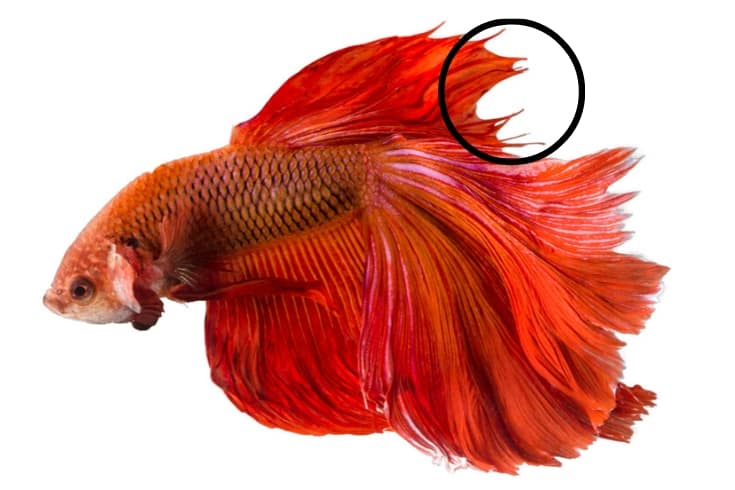
Symptoms: Fin and tail rot can cause the fins and tail to become discolored, frayed, and eventually fall off. If the disease is left untreated, it can be fatal.
Treatment: The best way to treat fin and tail rot is to improve the water quality. This can be done by doing a water change, adding a filter to your fish bowl, or using a water conditioner. A complete water change will likely be beneficial, and if the disease is severe, you may need to use antibiotics.
2. Columnaris
Causes: Columnaris is a disease caused by a rod-shaped bacterium called Flexibacter Columnaris. This bacterium is commonly found in freshwater aquariums.
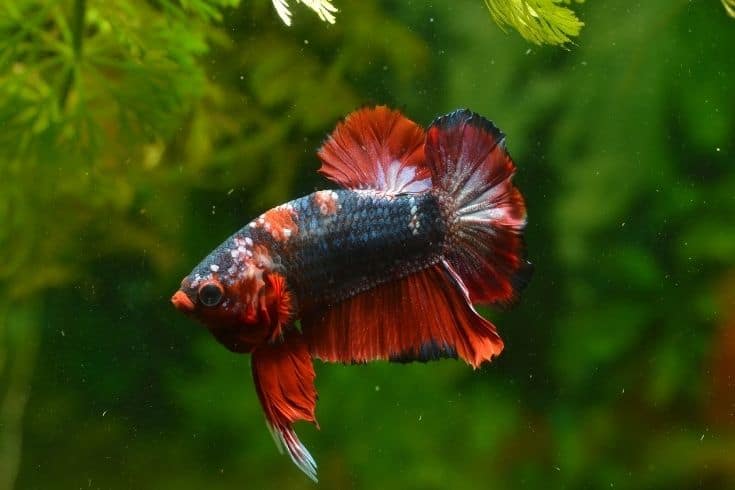
Symptoms: The symptoms of columnaris include white patches on the skin, fins, and mouth. The disease can also cause ulcers on the body.
Treatment: The best way to treat columnaris is with antibiotics. Good options include erythromycin, tetracycline, and chloramphenicol, but you should ask your veterinarian for the best choice for your fish.
3. Hemorrhagic Septicemia
Causes: Hemorrhagic septicemia is typically caused by a bacterial infection. The most common bacteria that cause this disease are Aeromonas hydrophila and Pseudomonas fluorescens.
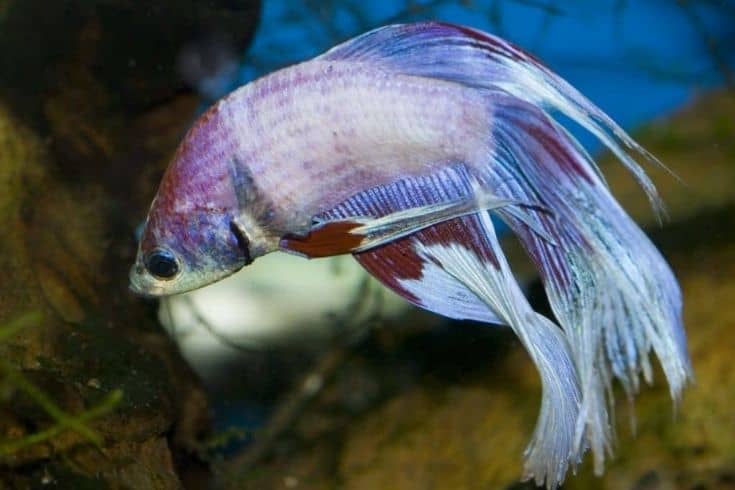
Symptoms: The symptoms of hemorrhagic septicemia include red patches on the skin, fins, and body. The disease can also cause mouth, nose, and gills bleeding.
Treatment: Unfortunately, there is no specific treatment for hemorrhagic septicemia. The best thing that you can do is to keep your fish in clean water and to monitor them closely for any signs of illness. If you notice any symptoms, you should seek veterinary care immediately. A professional is typically able to fix a mild infection.
4. Dropsy
Causes: Poor water quality is the most common cause of dropsy. However, the disease can also be caused by a bacterial infection or a virus. Part of the problem with dropsy is that it can be very difficult to determine the exact cause.
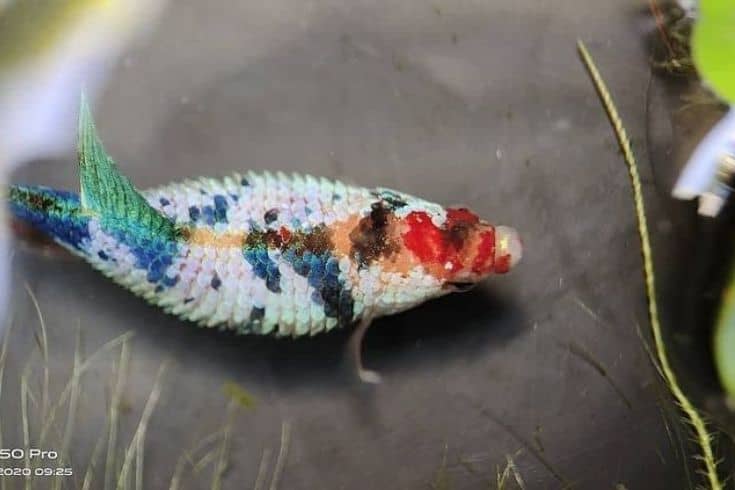
Symptoms: The symptoms of dropsy include swelling of the body, scales that stand away from the body, and increased mucus production. Because the scales stick out and away from the fish’s body, many hobbyists liken its appearance to pine cones.
Treatment: Move the fish to a hospital tank and treat with antibiotic medication. Good options include erythromycin, tetracycline, and chloramphenicol, though local pet stores will likely have a wide variety of different alternatives. You should also add salt to the water, as salt baths can help to reduce the swelling and eliminate signs of sickness. There’s no definitive cure for dropsy, but combining these methods often leads to visible signs of improvement.
5. Pop Eye
Causes: As the name suggests, pop eye is a condition that causes the eyes to bulge out. There are several possible causes of pop eye, including a bacterial infection, physical trauma, or a tumor. As far as betta diseases go, pop eye is relatively common due to its wide range of causes.
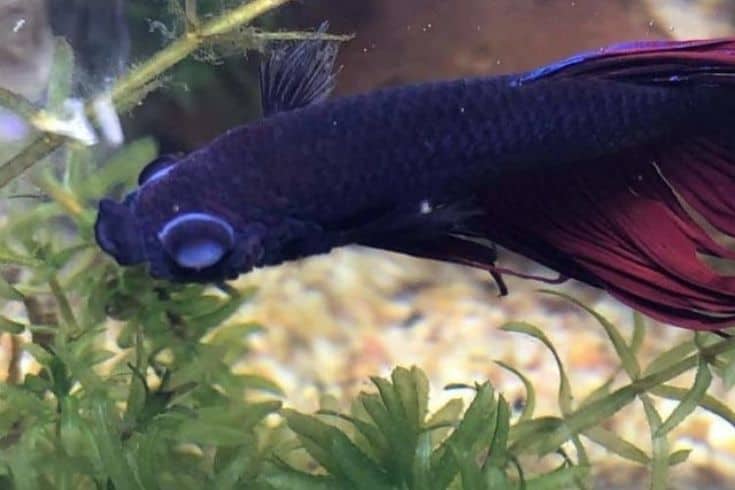
Symptoms: The most obvious symptom of pop eye is bulging eyes. However, the condition can also cause the eyes to appear cloudy or bloodshot. If left untreated, pop eye can lead to the permanent loss of sight, so it’s vital that you take action as soon as you start noticing early signs such as a cloudy cornea.
Treatment: The best way to treat pop eye is to perform a water change immediately, as this will help to remove the bacteria from the water. Prevention is the best form of cure in this case, as keeping your entire tank clean from the get-go dramatically lowers your fish’s risk of infection.
6. Furunculosis
Causes: Furunculosis is a disease caused by the bacterium Aeromonas hydrophila. This bacterium is commonly found in freshwater aquariums. Bettas that are already stressed out or have compromised immune systems are more likely to develop furunculosis.
Symptoms: The symptoms of furunculosis include red patches on the skin, fins, and body. The disease can also cause ulcers on the skin filled with pus. The sight of these sores look particularly prominent against colorful fish such as bettas. Your fish may also stop eating and become lethargic.
Treatment: Caught early, furunculosis can be treated with a course of antibiotics such as erythromycin or tetracycline. Iodine is sometimes used to decontaminate the aquarium, and salt can be added to the water to help reduce stress. If the disease is more advanced, fish owners may need to consider euthanasia.
7. Fish Fungus
Causes: Though commonly used as a catch-all term, fish fungus is most commonly seen as mouth fungus or fin fungus. The disease is caused by different types of fungi, including Saprolegnia and Achlya. Fungal infections are typically caused by poor water conditions or inappropriate tank size. If your betta is kept in a community tank, you may notice several sick fish in its vicinity.
Symptoms: The symptoms of a fungal infection include white or gray patches on the skin, fins, and body. The fungus can also cause ulcers on the skin.
Treatment: The best way to treat fungal infections is to increase the water’s temperature and add aquarium salt. You can also use an anti-fungal medication, such as ketoconazole.
8. Velvet Disease
Causes: Velvet disease is a parasitic infection caused by the protozoan Piscinoodinium pillulare. This protozoan is commonly found in freshwater aquariums, and healthy betta fish can usually fight off an infection. However, fish already stressed or weakened immune systems are more susceptible.

Symptoms: The symptoms of velvet disease include a yellow or brownish tint to the skin, as well as small dots on the body. The fish may also become lethargic and stop eating.
Treatment: The first thing you need to do is isolate your sick betta in a hospital tank. Then, you can treat the tank with an anti-parasitic medication, most of which contain copper, malachite green, or methylene blue. Care should be taken when using these medications, as they can be toxic to fish.
9. Ich
Causes: Sometimes known as white spot disease, ich is a parasitic infection caused by the protozoan Ichthyophthirius multifiliis. This external parasite is commonly found in both saltwater and freshwater aquariums, though dirty tank water dramatically increases your fish’s odds of infection.
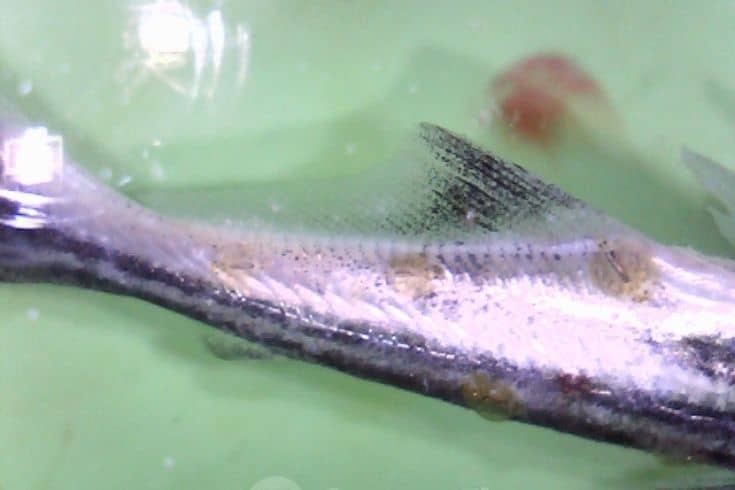
Symptoms: The symptoms of ich include small white spots on the fins, gills, and body of fish. The fish may also scratch itself against objects in the tank and become lethargic. If left untreated, ich can be fatal.
Treatment: Fortunately, ich is a relatively common disease and many treatments are available, each discussed at length by various fish experts. Most ich treatments contain formaldehyde, malachite green, or copper. You can also use a UV sterilizer to kill the parasites.
10. Anchor Worms
Causes: Anchor worms are parasitic crustaceans that burrow into fish skin. As one would expect, they resemble small worms, usually between 2-5mm in length. These parasites are most commonly found in freshwater aquariums, and is thought to be introduced into the tank via live food or plants.
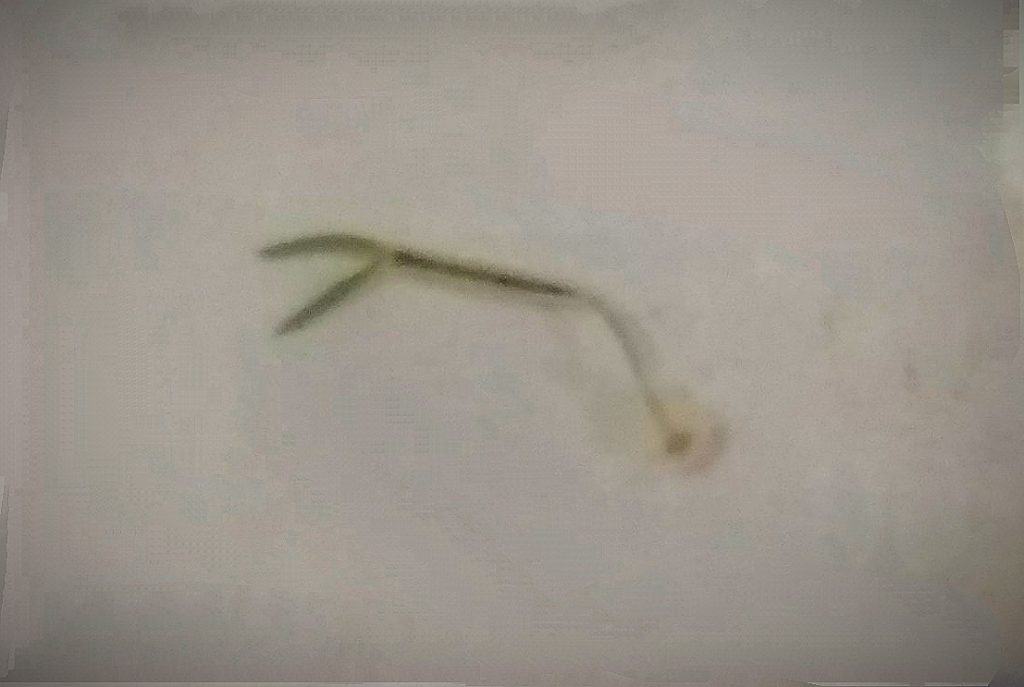
Symptoms: The symptoms of anchor worms include small red or white bumps on the skin and ulcers. These bumps may progress into abscesses, and the fish may scratch itself against objects in the tank. If left untreated, anchor worms can lead to organ failure.
Treatment: The best way to treat anchor worms is to remove them manually with a pair of tweezers. You can also treat the tank with an anti-parasitic medication, such as copper sulfate. Be sure to isolate your fish in a clean tank before administering any form of medication.
11. Hole in the Head Disease
Causes: Hole in the head disease is a condition that results in, well, holes in the head. Though the exact cause of the disease is unknown, it is thought to be caused by a combination of poor water quality and a weakened immune system. This disease is most commonly found in freshwater aquariums, though it can also occur in saltwater tanks.
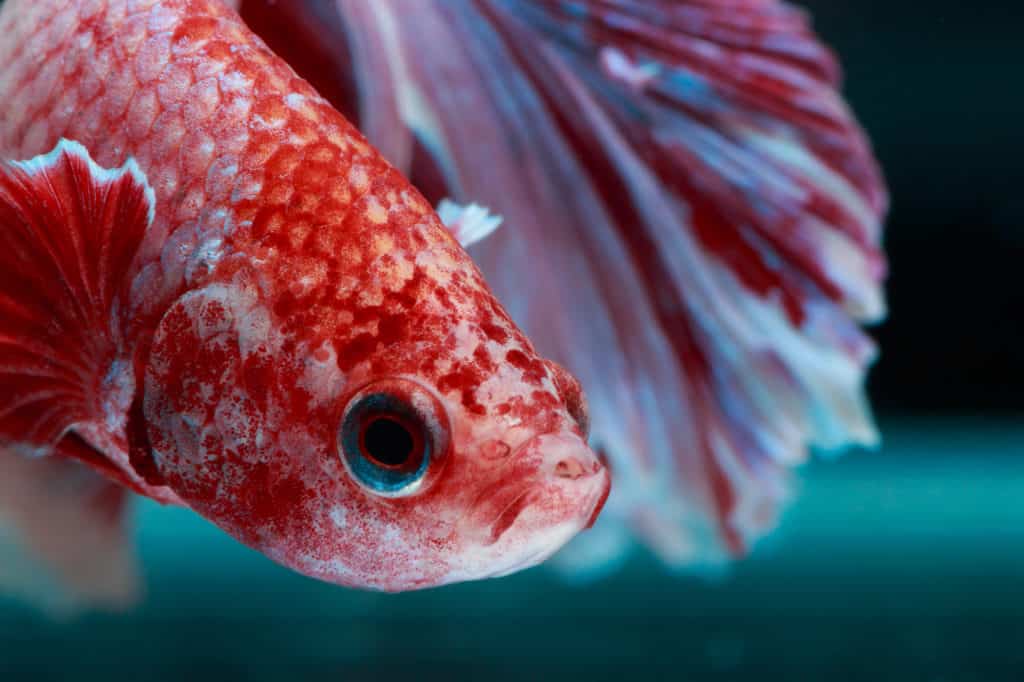
Symptoms: The symptoms of a hole in the head disease include small holes in the head, as well as white patches on the body. The fish may also become lethargic and stop eating.
Treatment: The best way to treat hole in the head disease is to improve the water quality and to increase the frequency of water changes. You can also treat the tank with an anti-parasitic medication like metronidazole.
12. Swim Bladder Disorder
Causes: Swim bladder disorder is a condition that affects the swim bladder, which is a gas-filled sac that helps fish stay buoyant. This condition can be caused by various factors, including poor water quality, constipation, and a birth defect. In most cases, however, it is caused by a poor diet.
Symptoms: The symptoms of swim bladder disorder include a fish floating at the surface of the water, a fish swimming upside down, and a fish having difficulty swimming. Fish with swim bladder disorder typically will also have a bloated abdomen and demonstrate a lack of appetite.
Treatment: As one of the more common illnesses on this list, swim bladder disorder can be remedied by feeding your high-quality fish food that is easy to digest. If the fish is constipated, you can try feeding it a pea. Be sure to monitor your fish carefully, as the condition may worsen over an extended period of time, causing your bettas body to appear more bloated. This is a treatable disease, but only if you act quickly.
13. Betta Tumors
Causes: Betta tumors are growths that can occur on the body of bettas. The exact cause of betta tumors is unknown, but they are thought to be caused by a combination of genetic factors and environmental stressors.
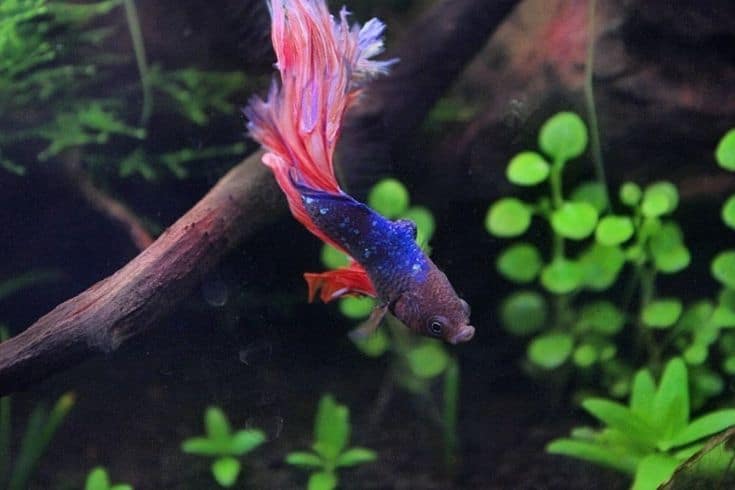
Symptoms: The symptoms of betta tumors include a mass on the body, fins, or gills. The fish may also become lethargic and stop eating. If left untreated, betta tumors can be fatal.
Treatment: The best way to treat betta tumors is to remove them surgically. You can also try to reduce the stress on the fish by providing a clean and warm environment. A hospital tank separate from the main tank may also be beneficial, allowing the fish to heal without stress.
14. Tuberculosis
Causes: Tuberculosis in fish is rare, but not unheard of. Mycobacterium marinum is a type of bacteria that can infect fish, and it is thought to be introduced into the tank via live food or plants. Left untreated, the illness can shorten your fish’s life span dramatically.
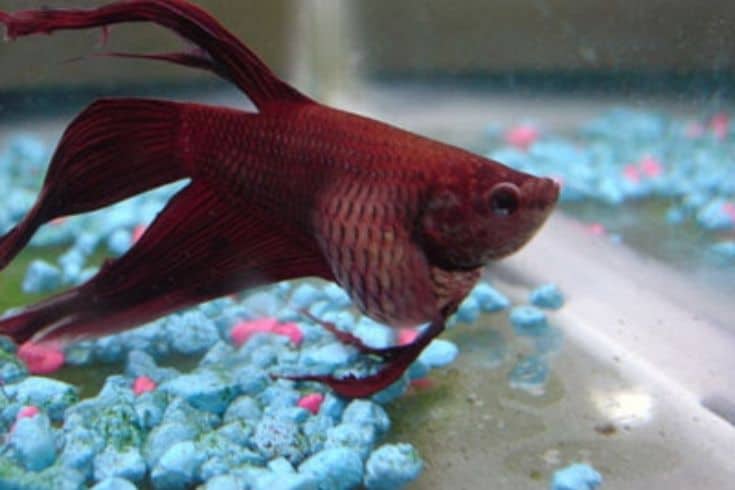
Symptoms: A betta fish with tuberculosis will appear to “waste” away, and you may notice that its fins and tail are disintegrating. Most fish will start acting lethargic and stop eating when they have tuberculosis. Because the early symptoms of tuberculosis are similar to a myriad of bacterial diseases and hemorrhagic disease, it can be difficult to diagnose. However, tuberculosis tends to be slightly more gentle on the external body tissue.
Treatment: Antibiotics and good tank maintenance are the best way to treat tuberculosis. The most effective antibiotics for treating this disease are streptomycin, kanamycin, and tetracycline. Pet owners must understand that there is no definitive cure for tuberculosis, and the disease will likely recur even after treatment.
15. Constipation
Causes: Constipation is a common problem in betta fish, and it can be caused by various factors, including a diet high in fiber, a lack of water changes, and a dirty tank. Bettas are unfortunately prone to constipation, as they are a “sit and wait” type of predator. This means they often swallow their food whole, which can lead to indigestion.
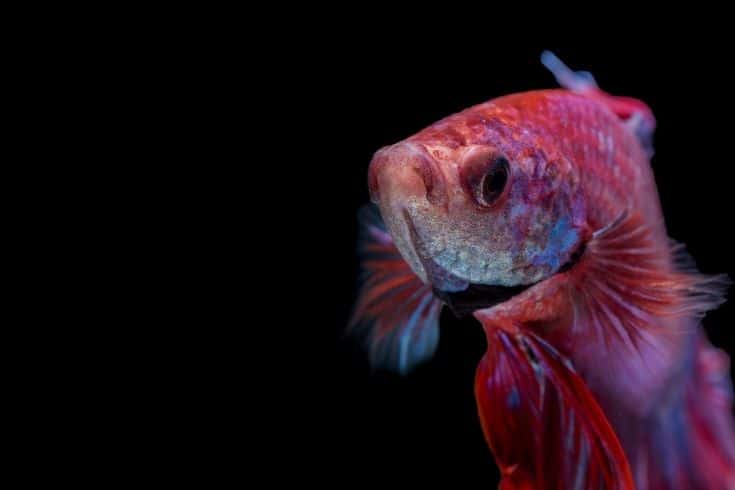
Symptoms: The symptoms of constipation include a bloated abdomen, a fish that is having difficulty swimming, and a fish that is refusing to eat.
Treatment: If you suspect your fish is constipated, the best thing to do is to perform a water change and feed your high-quality fish food that is easy to digest. You can also try feeding your fish a pea, which will help relieve constipation.
16. Ammonia Poisoning
Causes: Ammonia poisoning is one of the most common causes of death in betta fish. Ammonia is a toxic gas produced by the decomposition of organic matter, and it is often present in high levels in aquariums. Ammonia can also be introduced into the tank via tap water, as it is often present in high levels in municipal water supplies.
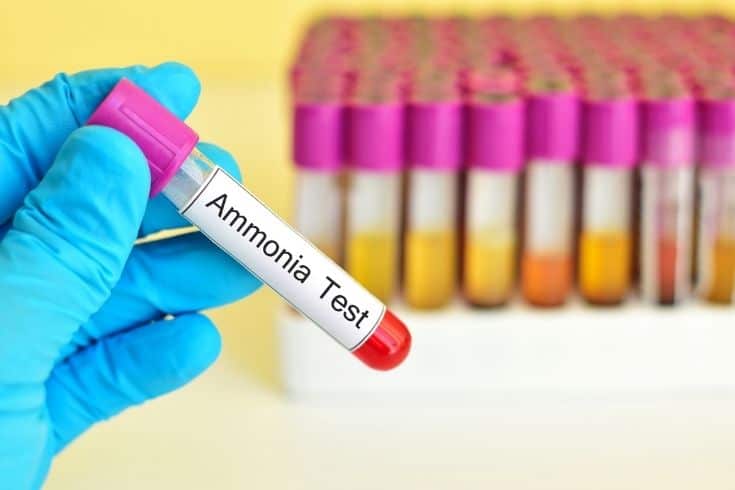
Symptoms: The symptoms of ammonia poisoning include lethargy, listlessness, and a fish that is refusing to eat. The fish may also have red or inflamed gills, and its fins may be clamped.
Treatment: The best way to treat ammonia poisoning is to do a water change and to add an ammonia remover to the tank. You can also try removing the ammonia’s source, such as decaying food or dead fish.
17. Slime Disease
Causes: Slime disease is a common problem in betta fish, and it can be caused by a variety of factors, including poor water quality, a lack of oxygen in the water, and a diet high in fat.
Symptoms: The symptoms of slime disease include a fish covered in a white, slimy substance. The fish may also have red or inflamed gills, and its fins may be clamped.
Treatment: The best way to treat slime disease is to do a water change and to add an oxygenator to the tank. You can also try adding a bit of salt to the water, which will help reduce the slime.
The Takeaway
Betta fish are prone to various diseases, and it is important to be aware of the signs and symptoms of these diseases so that you can take steps to prevent them. The best way to keep your betta fish healthy is to perform regular water changes and to feed them a high-quality diet. If you think your fish is sick, the best thing to do is to take it to a vet who can diagnose and treat the problem.
We hope you found this article helpful. If you have any questions or comments, please feel free to leave them below! And if you know someone who is thinking about getting a betta fish, share this article or one of our other betta care guides with them! Thanks for reading, and happy fishkeeping!
